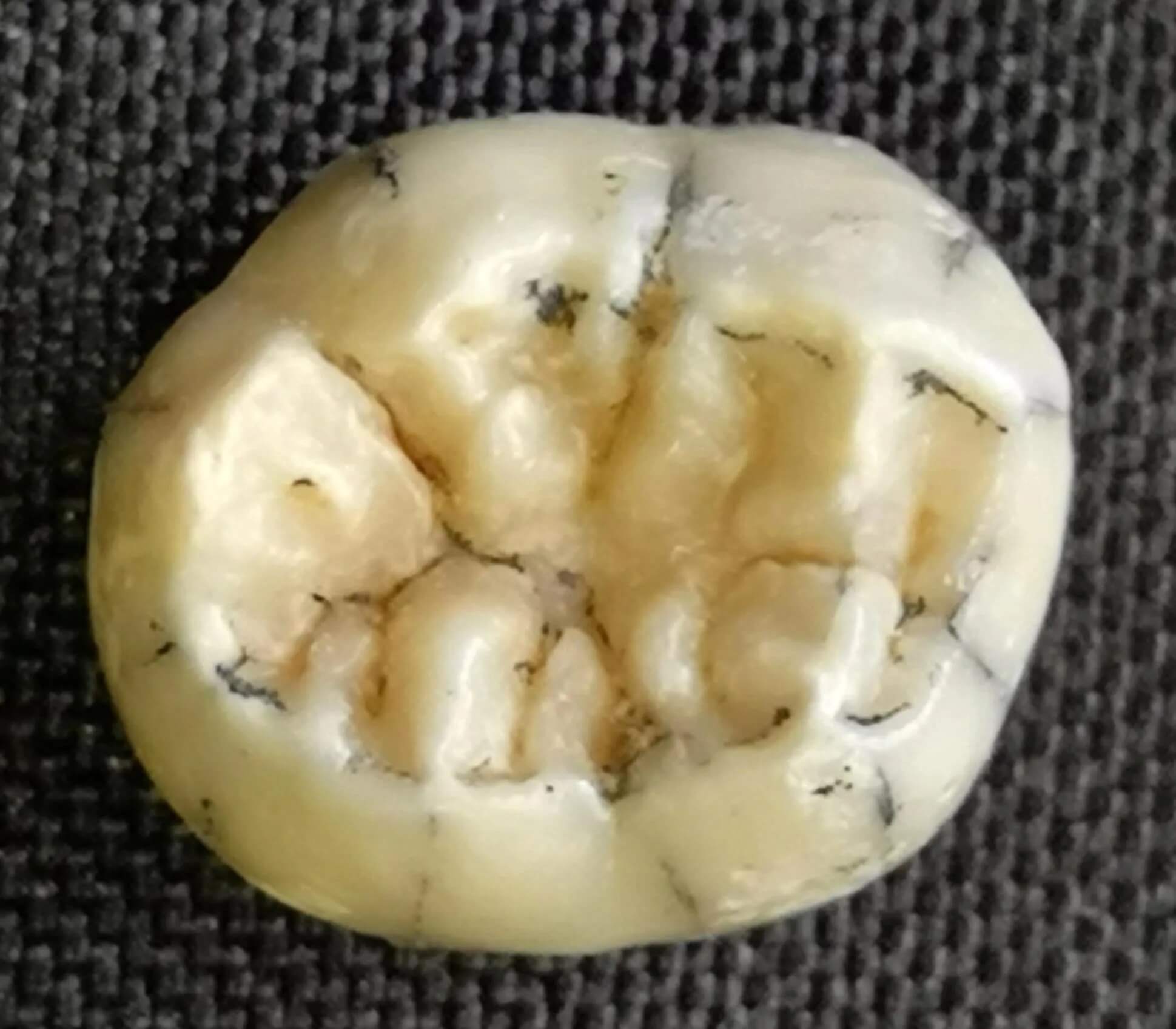Denisovan man, a sister race of modern man, lived in Laos 164,000 to 131,000 years ago with important implications for populations outside of Africa and Australia

What is the connection between a finger bone and some fossilized teeth discovered in a cave in the remote Altai Mountains in Siberia and between a single tooth discovered in a cave in the limestone landscapes of tropical Laos?
The answers to this question were determined by an international team of researchers from Laos, Europe, the United States and Australia.
The human tooth was found by chance during an archaeological survey in a remote area of Laos. Scientists have shown that it originates from the same ancient human population that was first identified in the Denisova Cave (and known as the Denisovan Man), in the Altai Mountains in Siberia (Russia).
The item TNH2-1 from different points of view. Credit: Nature Communications
The team of researchers' important discovery was discovered during its excavation campaign in 2018 in northern Laos. The new cave, Tam Ngu Hao 2, also known as Cobra Cave, is located next to the famous Tam Pà Ling Cave, where other important fossils of humans (Homo sapiens) from 70,000 years ago were previously found.
The team of international scientists is sure that the two ancient sites are related to the residences of Denisovans despite the thousands of kilometers that separate them.
What is the connection between a finger bone and some fossilized teeth discovered in a cave in the remote Altai Mountains in Siberia and between a single tooth discovered in a cave in the limestone landscapes of Laos?
The findings were published in the journal Nature Communications. Fabrice Demeter, the paper's lead author and a senior lecturer in paleoanthropology at the University of Copenhagen, says the sediments in the cave contained the teeth of giant herbivores, ancient elephants and rhinoceros, which are known to have lived in forested environments.
"After all this work - following the many clues written in fossils from very different regions - our findings are significant," says Professor Demeter.
"This fossil is the first discovery of Denisovan man in Southeast Asia and shows that Denisovans reached as far south as Laos at least. This matches the genetic evidence found in modern populations in Southeast Asia."
A view from Denisova Cave in the Altai Mountains in Russia. Note the very different vegetation and climate compared to Laos.
Credit: Mike Morley, Flinders University
After a very detailed analysis of the shape of this tooth, the research team identified many similarities to Denisovan teeth found in the Tibetan Plateau - the only other place where Denisovan fossils have ever been found. This suggests that it was probably a Denisovan man who lived 164,000 to 131,000 years ago in the warm tropics of northern Laos.
Inside the cave Ngu Hao 2 you can see the remains of the cave sediments which are full of fossils.
Credit: Fabrice Demeter (University of Copenhagen/CNRS Paris)
"We actually found the 'smoking gun' - this Denisovan tooth shows that they once had a presence this far south in the Laos Crest environment," says Mike Morley.
The complexity of the site created difficulty in dating and required two teams - one dated the cave sediments around the fossils and the other performed the direct dating of the fossil remains that were exposed.
More of the topic in Hayadan:
